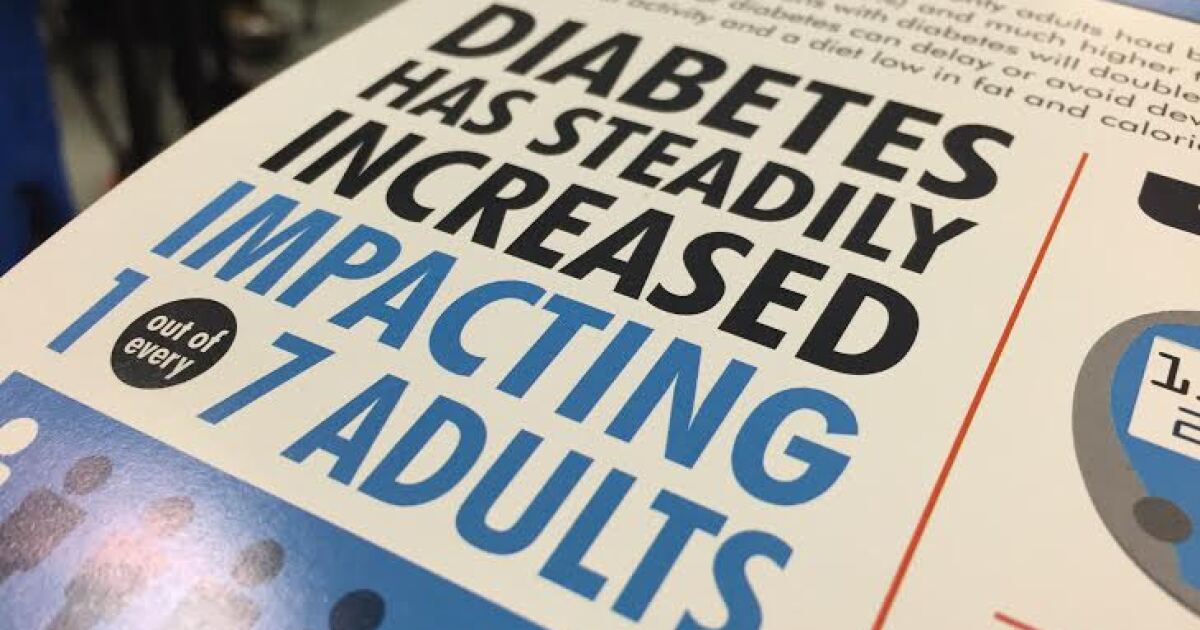
MONDAY on "The Source" — An estimated 15.5% of Bexar County adults have been diagnosed with Type 2 diabetes — the most common type of this chronic disease — which occurs when a person doesn't produce enough insulin or doesn't use it like it should.
Many more are undiagnosed and unaware of the threat.
Insulin helps the body turn that sugar, called glucose, from food into energy. Without the right amount of insulin doing what the body needs it to, too much blood sugar stays in the bloodstream, which can seriously damage organs and other body systems and can lead to heart or kidney disease, stroke, nerve damage, amputations, blindness, and even death. Type 2 diabetes also increases the risk of severe illness from COVID-19.
The Centers for Disease Control and Prevention estimates that 1 out of every 10 people in the U.S. have diabetes and 90-95% of those have Type 2. An additional 1 in 3 have prediabetes, meaning blood sugar levels are higher than they should be, but not enough for an official Type 2 diagnosis.
According to the CDC, new diagnosed Type 2 diabetes cases have significantly increased among U.S. youth, and racial and ethnic minorities continue to develop Type 2 diabetes at higher rates than their white counterparts.
The same is true in San Antonio, where 1 in 7 people has diabetes. The city has some of the highest rates of diabetes in the country and one of the highest diabetes-related amputation rates in Texas and the nation.
A City of San Antonio report on the Status of Diabetes 2018-2019 also shows that Bexar County’s overall diabetes hospitalization rate is consistently higher than that of Texas overall.
What should people know about Type 2 diabetes? How dangerous is it? Who is most at risk? What role do social determinants of health play?
What behavioral or lifestyle factors increase the threat of a Type 2 diabetes diagnoses? What can be done to prevent its onset?
How can you determine your personal risk level? When should you see a doctor? What treatments are available? Can the damage be undone?
What local programs, workshops and other resources exist for people living with Type 2 or prediabetes?
Why is this such a critical issue in San Antonio, and what can be done to reverse the epidemic?
Guests:
- Gabe Aguilar, senior management coordinator for the San Antonio Metropolitan Health District's Diabetes Control & Prevention Program
- Elia Escaname, MD, assistant professor of pediatric endocrinology in the Joe R. and Teresa Lozano Long School of Medicine at UT Health San Antonio and physician at University Health’s Texas Diabetes Institute
- Curtis Triplitt, PharmD, CDE, associate director of clinical research at University Health’s Texas Diabetes Institute and associate professor in the Division of Diabetes at UT Health San Antonio's Long School of Medicine
"The Source" is a live call-in program airing Mondays through Thursdays from 12-1 p.m. Leave a message before the program at (210) 615-8982. During the live show, call 833-877-8255, email thesource@tpr.org or tweet @TPRSource.
*This interview will be recorded on Monday, August 23.
"type" - Google News
August 23, 2021 at 01:58AM
https://ift.tt/3B2x5Bf
Diabetes Week: 1 In 7 People In San Antonio Have Type 2 Diabetes. Even More Remain Undiagnosed. How Can We Break The Cycle? - Texas Public Radio
"type" - Google News
https://ift.tt/2WhN8Zg
https://ift.tt/2YrjQdq
Bagikan Berita Ini














0 Response to "Diabetes Week: 1 In 7 People In San Antonio Have Type 2 Diabetes. Even More Remain Undiagnosed. How Can We Break The Cycle? - Texas Public Radio"
Post a Comment